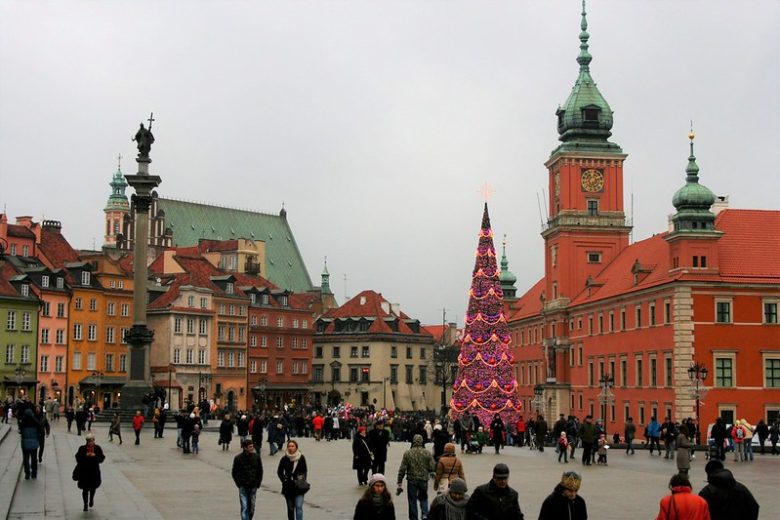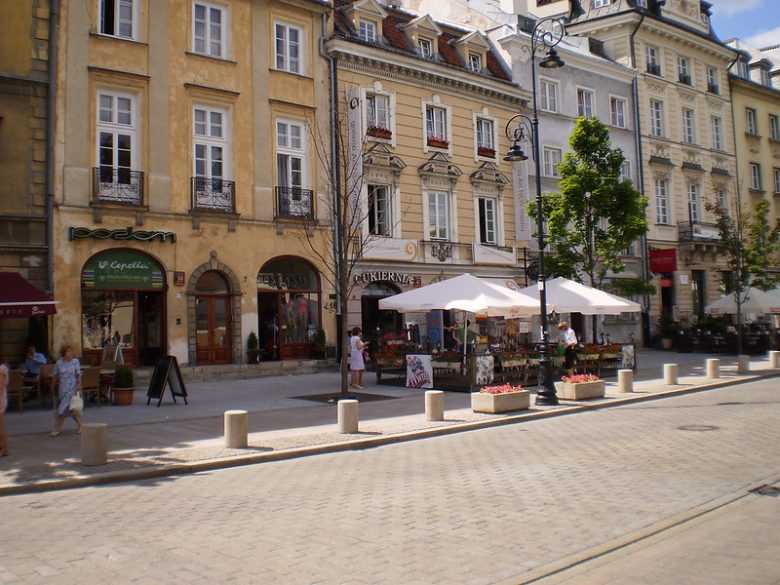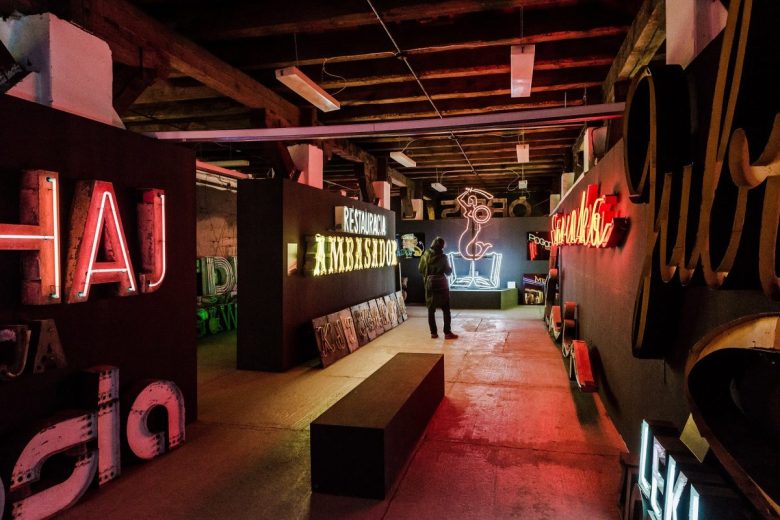
- Łazienki Królewskie (Royal Baths Park): A stunning 76-hectare park featuring classical architecture, a palace on the water, and peacocks roaming freely; it’s a perfect blend of nature and culture.
- Stary Rynek (Old Market Square): This vibrant square, with its colorful townhouses and lively cafes, is home to the neoclassical Town Hall and a mermaid statue, a symbol of Warsaw.
- Praga District: Known for its bohemian atmosphere, this historic district boasts charming streets, vibrant street art, and the iconic National Museum of Contemporary Art set in a former vodka factory.
- Palace of Culture and Science: A gift from the Soviet Union, this towering skyscraper combines socialist realism and art deco styles, housing theaters, museums, and an observation deck with panoramic city views.
- Neon Museum: A super original museum dedicated to the preservation of Cold War-era neon signs. It showcases a colorful array of neon artworks that offer a glimpse into the visual culture of post-war Poland.
Warsaw represents one of Europe’s increasingly attractive destinations for travelers. There are at least three reasons to visit: the architecture, the history and its contemporary cultural vibrancy. Here are some tips for discovering the true essence of this city…
If you are looking for a European capital To surprise you for a completely unprecedented vacation, surely Warsaw is the city you need to visit. The Polish capital is ideal for breathing the fresh and vital atmosphere of an unusually beautiful metropolis, here the structures of Soviet realism overlap with soaring skyscrapers. Warsaw is a city to be explored and understood, admired for its strength and determination, it is the city that has stood up proudly whenever historical events have sadly affected it. To appreciate it, it is good to see all aspects of this capital city, we have gathered for you some suggestions to discover it together.
Old Town
 Old Town
Old Town
After World War II, the old city of Warsaw has been meticulously reconstructed respecting its former appearance. Nearly two decades of work have earned recognition from theUnesco as a World Heritage Site.. This area of the city is home to the capital’s major monuments. Elements such as the Royal Castle Square, the cathedral of St. John and the church of Our Lady of Grace are just a few of the attractions found in this part of the city, located along a series of alleys e lanes that maintain their characteristic appearance.
Royal Castle
 Royal Castle
Royal Castle
The Royal Castle in Warsaw represents the history and past of the entire nation being the witness and the scene of important historical events. Built in the 300s as a small medieval village, has undergone several transformations over the centuries. It reached its heyday in the 600s during the time of the kings of the Waza dynasty, becoming at that time one of the richest castles in Europe. What differentiates it is the fact that it was completely razed to the ground during the Warsaw Uprising of 1944. Rebuilt thanks to the contributions and effort of the whole nation makes it very special worthwhile to be able to admire its interior. Inside, although many works were stolen by the Nazis, there are very important pieces by famous artists foremost among them are Rembrandt.
Krakowskie Przedmieście
 Krakowskie Przedmieście
Krakowskie Przedmieście
South of the Royal Castle runs probably the most famous street in the city, the Krakowskie Przedmieście. It begins the so-called Royal Way, used by kings to go from the castle to their summer palaces. In addition to its historical importance, this avenue is home to some of the city’s most important buildings, including the Presidential Palace, the University of Warsaw, the Church of St. Anne, the Church of the Holy Cross and the Potocki Palace. Walking the royal stretch is a nice way to enjoy the beauty and history of Warsaw. In the summer months it is full of people, Varsavians and tourists alike, who also appreciate enjoying an ice cream, or eating a gofry, while taking a walk.
Warsaw Ghetto
 Jewish Ghetto
Jewish Ghetto
The Warsaw ghetto is the largest Jewish ghetto in Europe where more than 400,000 people died. Before the outbreak of World War II this area was home to the largest Jewish community after New York City. Originally the Warsaw Ghetto occupied a space of 4 kilometers long and about 2.5 kilometers wide and included, in addition to the old medieval ghetto, the streets of the industrial ward and the highway to Berlin and Poznań that ran through it, dividing it into two parts. It was established in the‘summer of 1940 as a quarantine camp in order to avoid the danger of epidemics. Today The Way of Remembrance within the ancient ghetto commemorates the atrocities committed during those years. It starts from the Monument to the Heroes all the way to the Umschlagplatz. The route of the Via della Memoria is marked by 16 granite blocks, with inscriptions in Polish, Yiddish and Hebrew, commemorating the 450,000 Jews killed in the Warsaw Ghetto and the heroes of the uprising. Not far away is also the Bunker Monument a large boulder placed on a knoll that commemorates the location of the bunker.
Palace of Culture and Science
 PKiN Palace of Culture and Science
PKiN Palace of Culture and Science
PKiN, as it is commonly called, is the city’s iconic building. This controversial building, even hated by some, has been a gift from Stalin to the Polish people in 1955. With his 231 meters in height, is the tallest building in the country. Today it serves as an exhibition center and office complex. You can go up to the observation deck on the 30th floor and the view of the city is remarkable. In its rooms also the Bar Studio and the Cafe Kulturalna, meeeting points of the creative tribe: where they consume everything from a healthy smoothie to a steak tartare, and discuss late into the night.
Neon Museum
 Neon Museum
Neon Museum
The Neon Museum is located at Prague, former industrial district of Warsaw, somewhat off the tourist track and now the city’s new cultural district. The Neon Muzeum, as it is called by the Poles, in fact, is located within the Soho factory, a former motorcycle factory that now houses contemporary art galleries. It brings together the largest exhibition dedicated to neon signs in Europe and is the brainchild of Polish-born British photographer Ilona Karwinska, who in 2005 organized a trip to Poland and fell in love with the old writing at the Soviet-era neon which can still be found around the city. After Stalin’s death, in fact, there was a great use of neon as a form of propaganda, an inexpensive way of beautifying cities and giving them a more modern and colorful appearance, a kind of response to the dreariness and austerity they had up to that time.





Leave a Reply